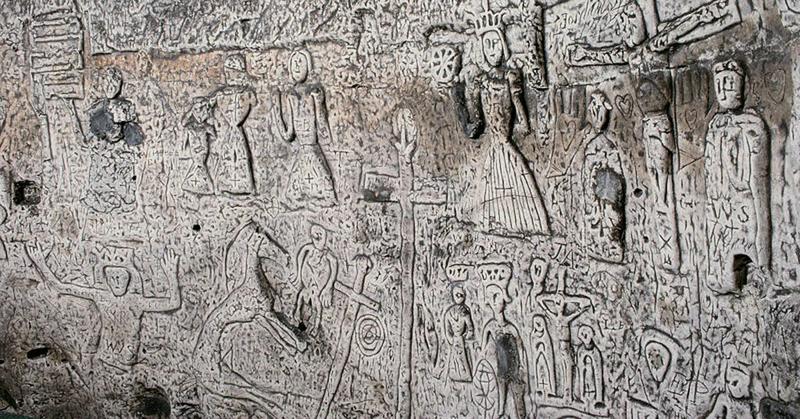The Incredible Discovery Of Royston Cave
By | November 28, 2022

Located north of London in the English town of Royston is a strange and mysterious manmade cave that was hidden from the town's residents for hundreds of years. Sometime in the 12th century, a trading outpost sprang up in Royston. Much later, workers in the marketplace happened upon the entrance to the cave.

Royston Cave
The town of Royston is located along the Ickneild Way, now called Melbourn Street, an ancient road that wound to Salisbury Plain—you know, the place where Stonehenge sits—and was used by prehistoric tribes, Roman invaders, and even the Knights Templar. In August 1742, a worker was hired to install a bench in the town's butter market on this street and found a round millstone beneath the ground. When he moved it, he found a 30-foot shaft that led to a cave whose walls were covered in ornate carvings of religious scenes. The townspeople were certain the cave must have concealed a great treasure, but they found little more than a few pottery shards and some bones.

Who Carved Royston Cave?
It's unclear who created Royston Cave or what its purpose was, but theories range from storage for Augustinian monks to an early Freemason lodge linked to King James I. The theory that's gained the most attention, however, is that it served as a secret meeting place for the Knights Templar. As evidence, historians point to some of the carvings on the cave's walls that seem to depict Templar symbols and their similarity to cave carvings found in Israel where the Knights Templar traveled on their crusades. Researchers still study the wall carvings at Royston Cave and comb through ancient texts for answers to the cave's mysteries.

